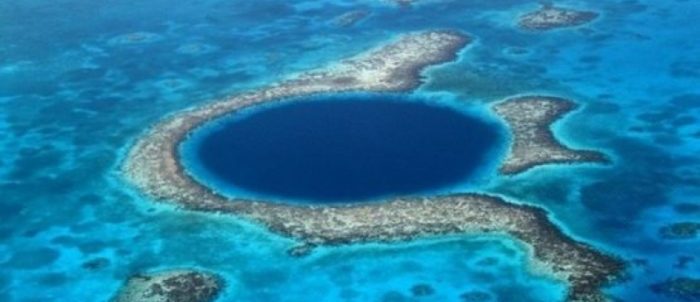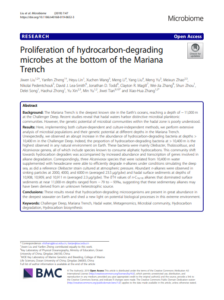An international team of researchers has discovered a new group of oil-eating bacteria in the mysterious ecosystem of the Mariana Trench, according to a study published in the journal Microbiome. Located in the Western Pacific, the deepest part of the trench lies a staggering 36,200 feet below sea-level. If you were to place Mount Everest at the bottom, the peak would still be around 7,000 feet from the surface.
We know more about Mars than the deepest part of the ocean.
says lead researcher Xiao-Hua Zhang, from the Ocean University in China.
Specifically, according to the study, the concentrations of this microbial plankton were found to be higher at the bottom of the Mariana Trench than anywhere else previously recorded on Earth, and that provides a new insight into how life exists and thrives at such depths – where the pressure is the equivalent of 1,091 kilograms (172 stone) being pressed against a fingernail.
As Jonathan Todd from the University of East Anglia in the UK stated
We studied the samples that were brought back and identified a new group of hydrocarbon-degrading bacteria. Hydrocarbons are organic compounds that are made of only hydrogen and carbon atoms, and they are found in many places, including crude oil and natural gas.
He continued that these kinds of microorganisms mostly consume compounds similar to those in oil and then use it for fuel. Similar microorganisms play a role in degrading oil spills in natural disasters such as BP’s 2010 oil spill in the Gulf of Mexico.
Moreover, Nikolai Pedentchouk from UEA commented that a part of the study focuses on the hydrocarbons that are keeping the microbes alive, and where they might have come from.
He highlighted that the pollution that the humanity has caused is likely to be making its way into the trench, located in the western Pacific Ocean.
To our surprise, we also identified biologically produced hydrocarbons in the ocean sediment at the bottom of the trench. This suggests that a unique microbial population is producing hydrocarbons in this environment.
… Nikolai Pedentchouk noted.
The next step is to gather more information on these microbes and where their food might be coming from – probably both natural and unnatural sources. There might yet be other types of bacteria that are able to feed on hydrocarbon compounds in the same way.
For more information on the study, click on the PDF herebelow





























































